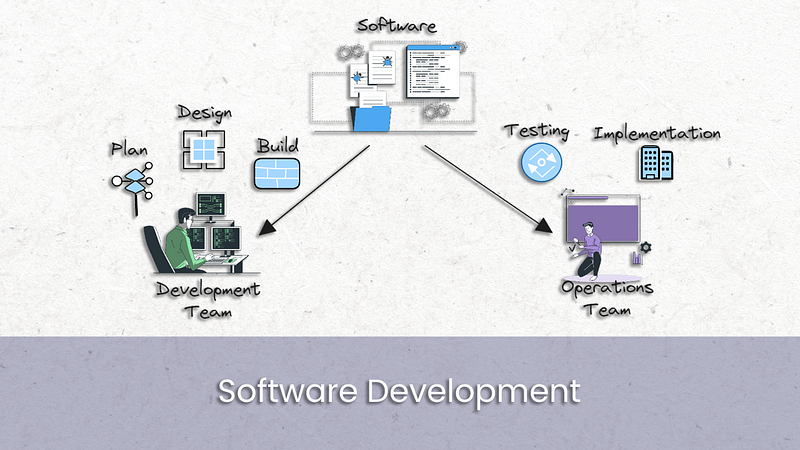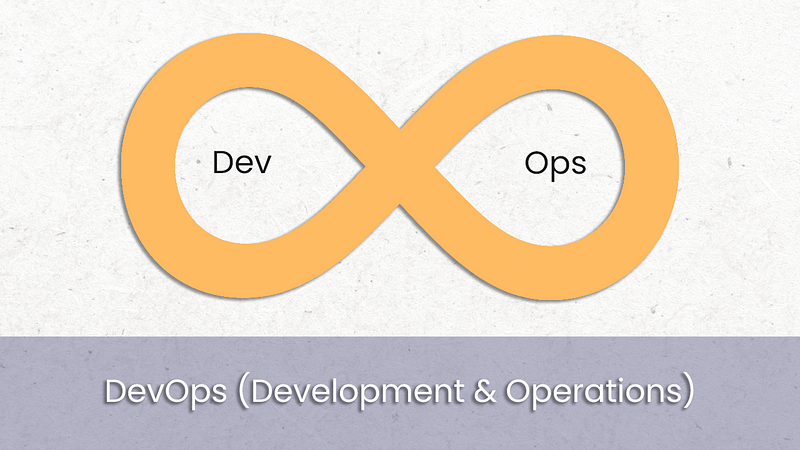Understanding DevOps: A Comprehensive Overview of Its Principles
Written on
Chapter 1: The Concept of DevOps
The term "DevOps" has become ubiquitous in the tech world, yet many may not fully grasp its meaning or implications. I recall a particular interview where I was asked about the most challenging aspect of my career. While reflecting on various hurdles in managing infrastructure or tools, I realized the toughest question was simply explaining my role in DevOps to someone else.
Albert Einstein once stated, "If you can't explain it simply, you don't understand it well enough." This made me ponder: do I truly comprehend DevOps? To validate my understanding, I aim to articulate it in a manner that anyone can grasp.
Let’s start from the early days of software development when creating even a basic application could take years. Traditionally, it required two distinct teams: developers (programmers) and operations personnel. Developers were responsible for planning, designing, and building software, while the operations team would take the finished product, establish the necessary infrastructure, and implement it.
During this process, the operations team would test the software on the new infrastructure, providing feedback to the developers if any issues arose.

While operations were busy implementing and testing, developers had to wait, leading to extended timelines and delays in project completion. Often, the development team would initiate new projects while still receiving feedback on previous ones, which could stretch the timeline to months or even years.
Imagine if these two teams collaborated more closely, breaking down the barriers that created confusion. This collaboration gave rise to the term DEVelopment and OPerationS, or DevOps.

The DevOps symbol resembles an infinity loop, symbolizing ongoing improvement and perpetual activity. No longer would developers wait for feedback to identify issues; instead, they would work together seamlessly.
To foster this collaboration, teams don’t necessarily need to form a single unit but rather cultivate a culture that embodies DevOps. This means they engage in a planning phase where developers outline their approach. Once a plan is established, coding commences, with various versions stored in a repository.
A repository, such as GIT, acts as a storage space for all code and its history, enabling developers to revert to previous versions if necessary. After code is saved in the repository, it becomes executable through automation tools like Maven or Gradle.
If the build is successful, it undergoes automated testing for any bugs or errors, often utilizing tools like Selenium. At this point, the code is subjected to both automated and manual tests. Once it passes, it is ready for deployment to the operations team, who will implement it in a working environment using automation tools like Ansible, Docker, and Kubernetes.
Post-deployment, continuous monitoring is essential for identifying potential issues. One of the widely used monitoring tools is Nagios. Feedback gathered during this phase loops back to the planning stage, completing the cycle represented by the DevOps infinity symbol.

This process is known as continuous integration, as it perpetually cycles through planning, coding, building, testing, deploying, operating, and monitoring.
After planning, the development team writes and saves code in the repository, triggering a build process. If issues arise, the team can address them promptly. A successful build leads to testing, where bugs can be detected and resolved. If tests are successful, the code is deployed in a designated working or development environment. Continuous monitoring ensures that any failures are quickly identified and rectified.
Many organizations today are embracing automation to minimize delivery times and bridge gaps between development and operations teams. To achieve this, the only viable culture to adopt is DevOps.
Chapter 2: DevOps in Practice
To deepen your understanding of DevOps, consider watching these insightful videos:
This first video, titled "DevOps Explained and the History of DevOps," provides a thorough overview of the concept and its evolution.
The second video, "What is DevOps? - In Simple English," breaks down the principles of DevOps in an easily digestible format.